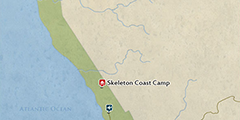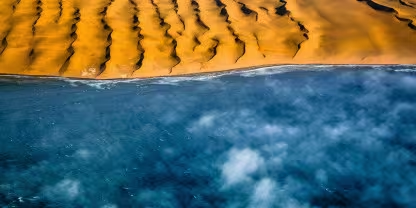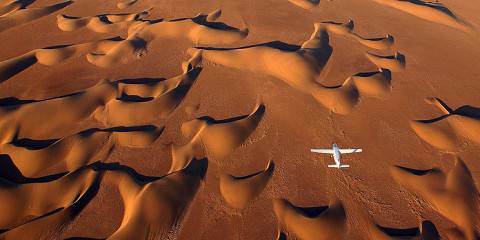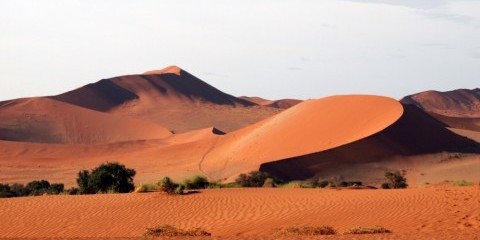Skeleton Coast National Park is a gloriously remote and windswept strip of desert stretching nearly 500km/310mi along Namibia’s Atlantic coast. This otherworldly park is often shrouded in fog, and its name comes from the numerous shipwrecks lying on the shore. A big draw for visitors is the fascinating Cape fur seal colonies, especially at Cape Cross, to the south of the park.
-
Best Time To Go
- October to March (Warmer nights and less fog)
-
High Season
- July to October (Busier, and higher rates apply)
-
Size
- 16,390km² / 6,328mi²
-
Altitude
-
0-705m /0-2,313ft
 View Photos
View Photos
 View Photos
+19
Photos
View Photos
+19
Photos
 Open Map
Open Map
Pros & Cons
- Fascinating desert coastline environment
- Big seal colonies
- Off-the-beaten-track wilderness destination
- Excellent birding opportunities
- Very remote and inaccessible
- Low animal densities and little variety
Wildlife
The Skeleton Coast is not a prime wildlife destination. Most people visiting this area stop prior to reaching the national park at the Cape Cross fur seal colony. Similar, less-accessible colonies can be found inside the park, including a huge colony at Torra Bay farther north. They attract scavengers such as brown hyena and black-backed jackals. Other marine wildlife includes Heaviside's dolphin and green turtle.
More about the Skeleton Coast’s wildlifeScenery
The park protects a narrow strip of barren desert coast. The conflict of temperatures where the sea meets the desert creates a layer of almost permanent fog, which makes the scenery even more mysterious. The fog gives life to more than 100 different species of lichen, which reveal a mosaic of colors and shapes when viewed closely.
Activities
Wildlife viewing here is largely restricted to the seal colonies, although the birding can be excellent. This is a popular area for 4WD expeditions, and some of the remote, upmarket lodges offer quad biking and hiking. The coast is a popular place for Namibians to go recreational shore fishing.
Weather & Climate
The Skeleton Coast experiences a dry winter with minimal rainfall, which is known as the Dry season (May to October). These months are also characterized by cool winds blowing in from the west, and heavy fog, particularly in the morning. Summer coincides with the Wet season (November to April) and sees a continuation of the fog, though it diminishes slightly. There’s also increasing rainfall and warmer temperatures.
More about the weather and climateBest Time To Visit
The best time to head to the Skeleton Coast is during the warmer months, roughly from October to March. The fog is not as heavy at this time and the skies clear up after rain. You’re also more likely to see wildlife, as the chilly winds of the drier months tend to send animals scampering for cover.
More about the best time to visit



